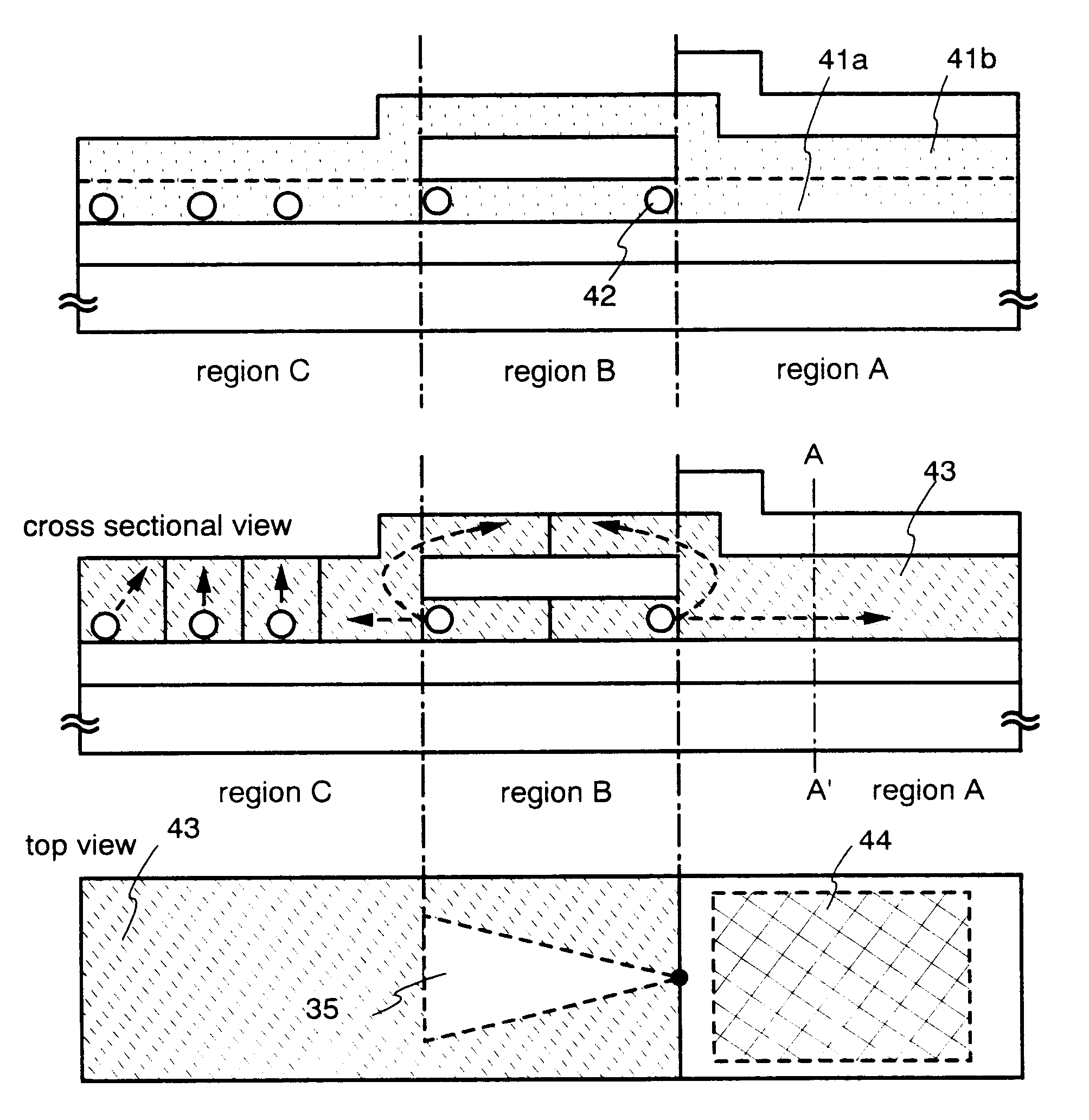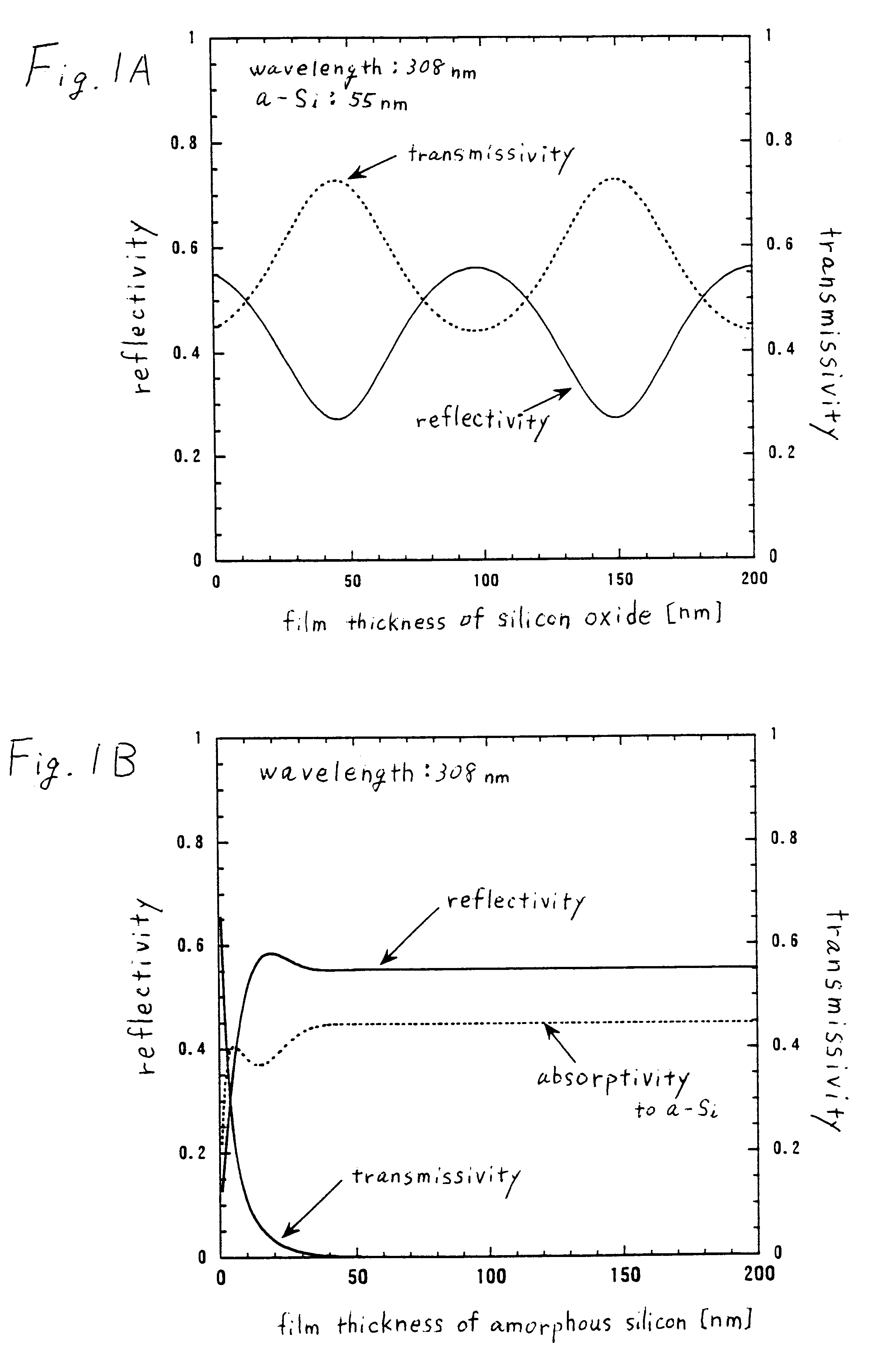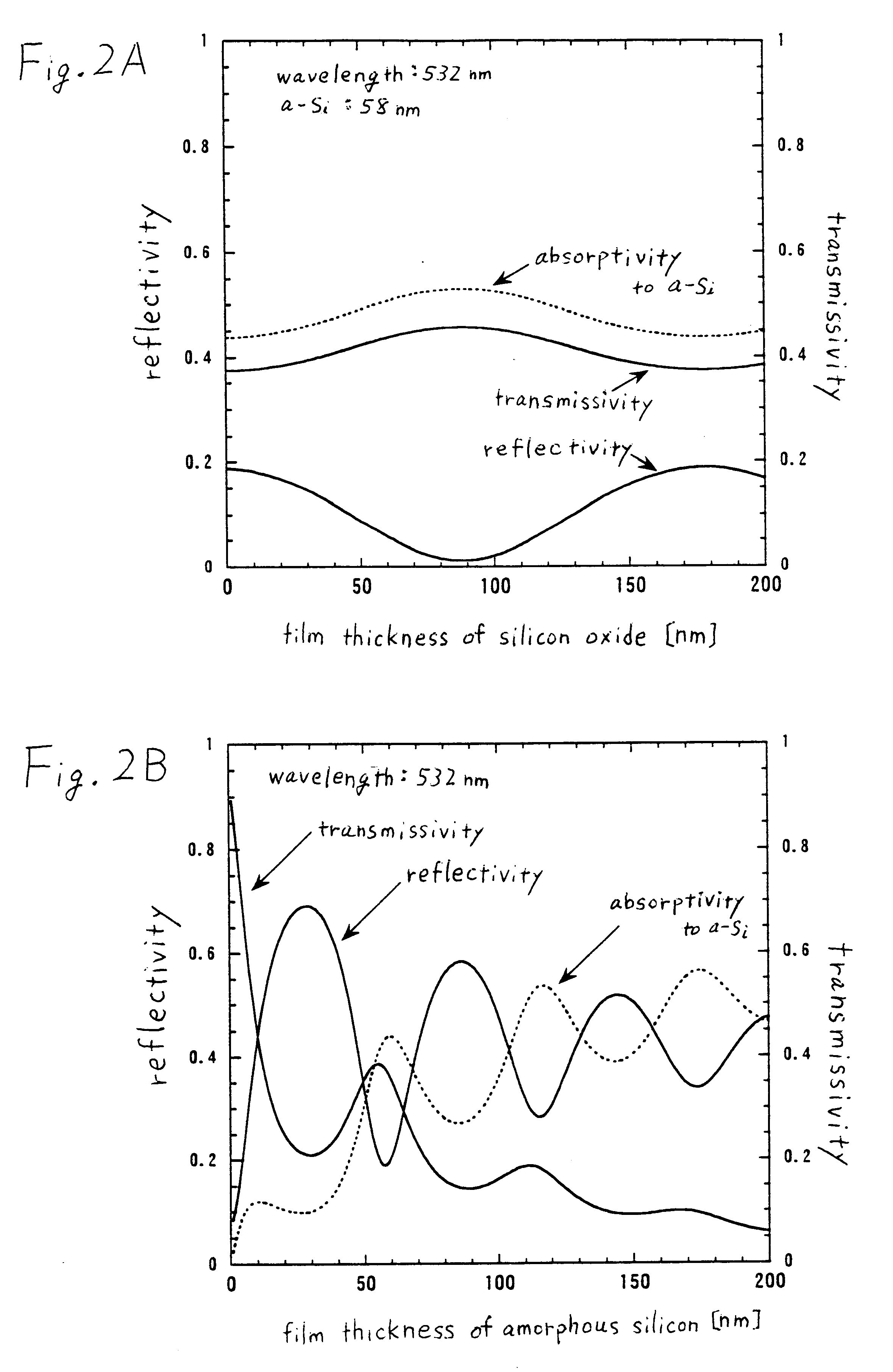Method of manufacturing a semiconductor device
a manufacturing method and semiconductor technology, applied in the direction of semiconductor devices, electrical devices, transistors, etc., can solve the problems of amorphous structure and crystal defects, inability to control the position at which large-scale crystal grains are obtained, and extremely narrow energy regions
- Summary
- Abstract
- Description
- Claims
- Application Information
AI Technical Summary
Problems solved by technology
Method used
Image
Examples
embodiments
[Embodiment 1]
Embodiments of the present invention are explained using the cross sectional diagrams of FIGS. 3A to 4D. Note that a top surface diagram is also given along with a cross sectional diagram for FIGS. 3B and 4D.
A synthetic quartz glass substrate, non-alkaline substrate such as barium borosilicate glass or aluminum borosilicate glass, or a transparent film or PC (polycarbonate), PAr (polyallylate), PES (polyether sulfone), or PET (polyethylene terephthalate) may be used as the substrate 11 in FIG. 3A. For example, a glass such as Corning Corp. 7059 glass or 1737 glass can be suitably used.
The base insulating film 12 made from a film such as silicon nitride, silicon oxynitride, or silicon oxide is formed with a thickness of 10 to 200 nm (preferably from 10 to 100 nm) on the substrate 11 by a known method (LPCVD, plasma CVD, and the like). A silicon oxynitride film having a film thickness of 50 nm (composition ratios: Si=32%; O=27%; N=24%; H=17%) is formed in embodiment 1.
Th...
embodiment 2
[Embodiment 2]
A method of performing laser annealing after partially crystallizing a semiconductor film by heat treatment is explained using the cross sectional diagrams of FIGS. 6A to 7D. Note that a top surface diagram is also given along with a cross sectional diagram for FIGS. 6B and 7D.
A synthetic quartz glass substrate, non-alkaline glass substrate such as barium borosilicate glass or aluminum borosilicate glass, or a transparent film such as PC (polycarbonate), PAr (polyallylate), PES (polyether sulfone), or PET (polyethylene terephthalate) may be used as a substrate 31 in FIG. 6A. For example, a glass such as Coming Corp. 7059 glass or 1737 glass can be suitably used.
A base insulating film 32 made from a film such as silicon nitride, silicon oxynitride, or silicon oxide is formed with a thickness of 10 to 200 nm (preferably from 10 to 100 nm) on the substrate 31 by a known method (LPCVD, plasma CVD, and the like). A silicon oxynitride film having a film thickness of 50 nm (c...
embodiment 3
[Embodiment 3]
An embodiment of the present invention is explained using the cross sectional diagrams of FIGS. 8A to 9C. Note that a top surface diagram is also given along with a cross sectional diagram for FIGS. 8B and 9C.
A synthetic quartz glass substrate, non-alkaline glass substrate such as barium borosilicate glass or aluminum borosilicate glass, or a transparent film such as PC (polycarbonate), PAr (polyallylate), PES (polyether sulfone), or PET (polyethylene terephthalate) may be used as a substrate 51 in FIG. 8A. For example, a glass such as Corning Corp. 7059 glass or 1737 glass can be suitably used.
A base insulating film 52 made from a film such as silicon nitride, silicon oxynitride, or silicon oxide is formed with a thickness of 10 to 200 nm (preferable from 10 to 100 nm) on the substrate 51 by a known method (LPCVD, plasma CVD, and the like). A silicon oxynitride film having a film thickness of 50 nm (composition ratios: Si=32%; O=27%; N=24%; H=17%) is formed in embodim...
PUM
| Property | Measurement | Unit |
|---|---|---|
| angle | aaaaa | aaaaa |
| length | aaaaa | aaaaa |
| diameter | aaaaa | aaaaa |
Abstract
Description
Claims
Application Information
 Login to View More
Login to View More - R&D
- Intellectual Property
- Life Sciences
- Materials
- Tech Scout
- Unparalleled Data Quality
- Higher Quality Content
- 60% Fewer Hallucinations
Browse by: Latest US Patents, China's latest patents, Technical Efficacy Thesaurus, Application Domain, Technology Topic, Popular Technical Reports.
© 2025 PatSnap. All rights reserved.Legal|Privacy policy|Modern Slavery Act Transparency Statement|Sitemap|About US| Contact US: help@patsnap.com



